Abstract
Denitrification and nitrification in sediments of Tama Estuary and Odawa Bay, Japan, were investigated by the combined use of a continuous-flow sediment-water system and a 15N tracer technique. At Odawa Bay, the nitrification rate was comparable to the nitrate reduction rate, and 70% of the N2 evolved originated from nitrogenous oxides (nitrate and nitrite) which were produced by the action of nitrifying bacteria in the sediments. At Tama Estuary, the nitrate reduction rate was 11 to 17 times higher than the nitrification rate, and nitrogenous oxides derived from ammonium accounted for only 6 to 9% of the N2 evolution by denitrification.
Full text
PDF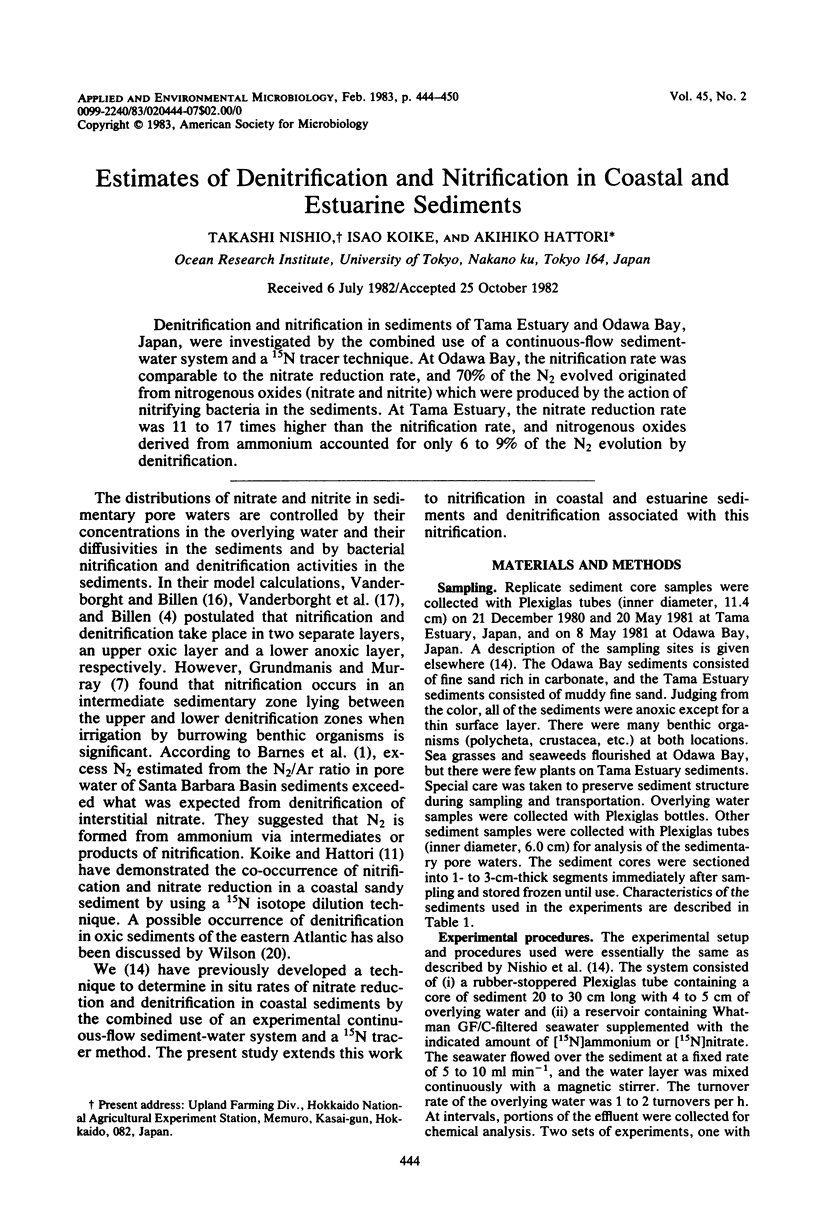
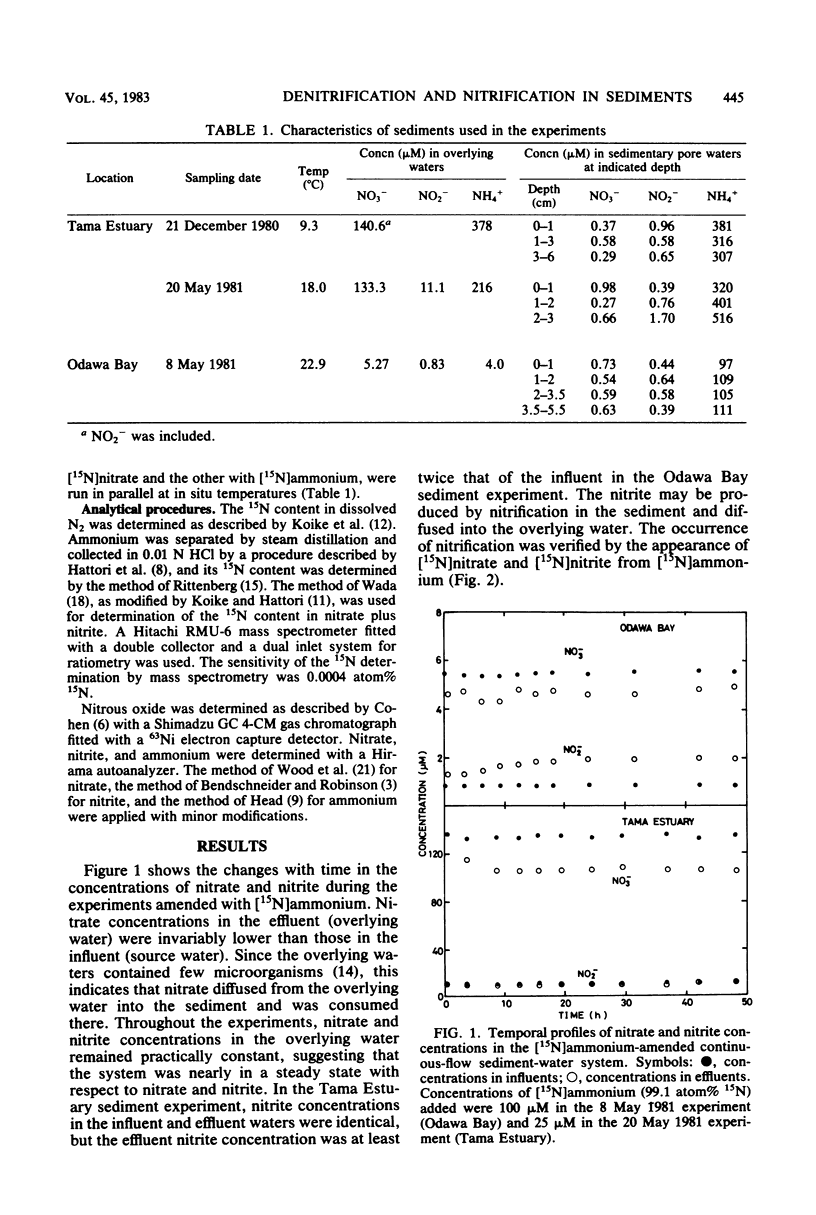
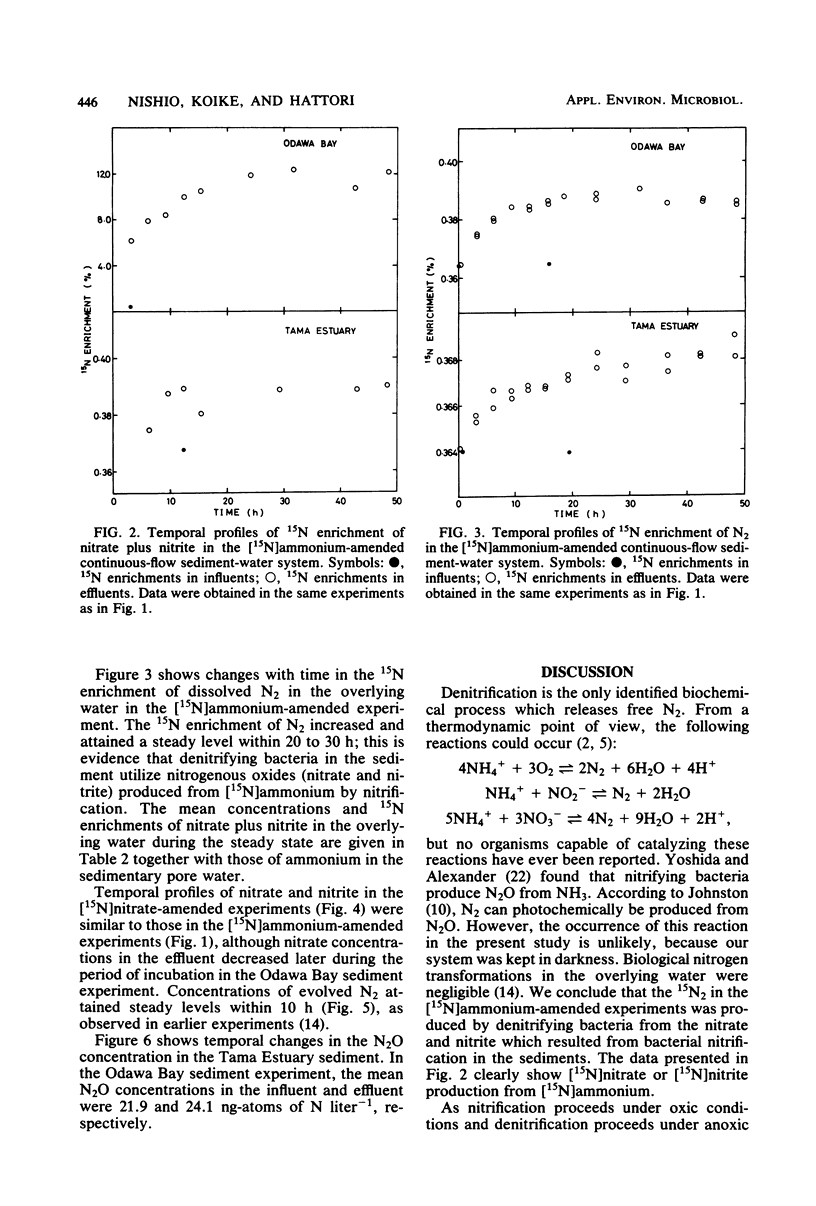
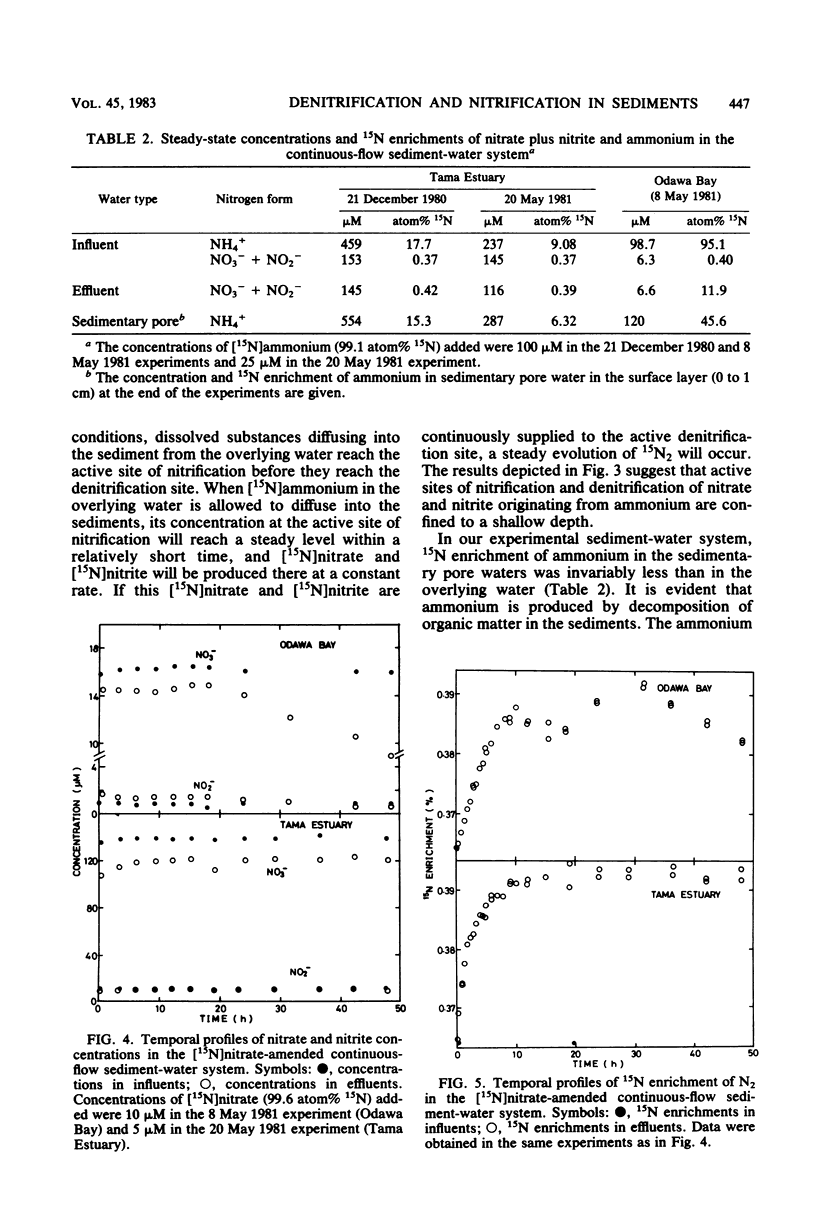
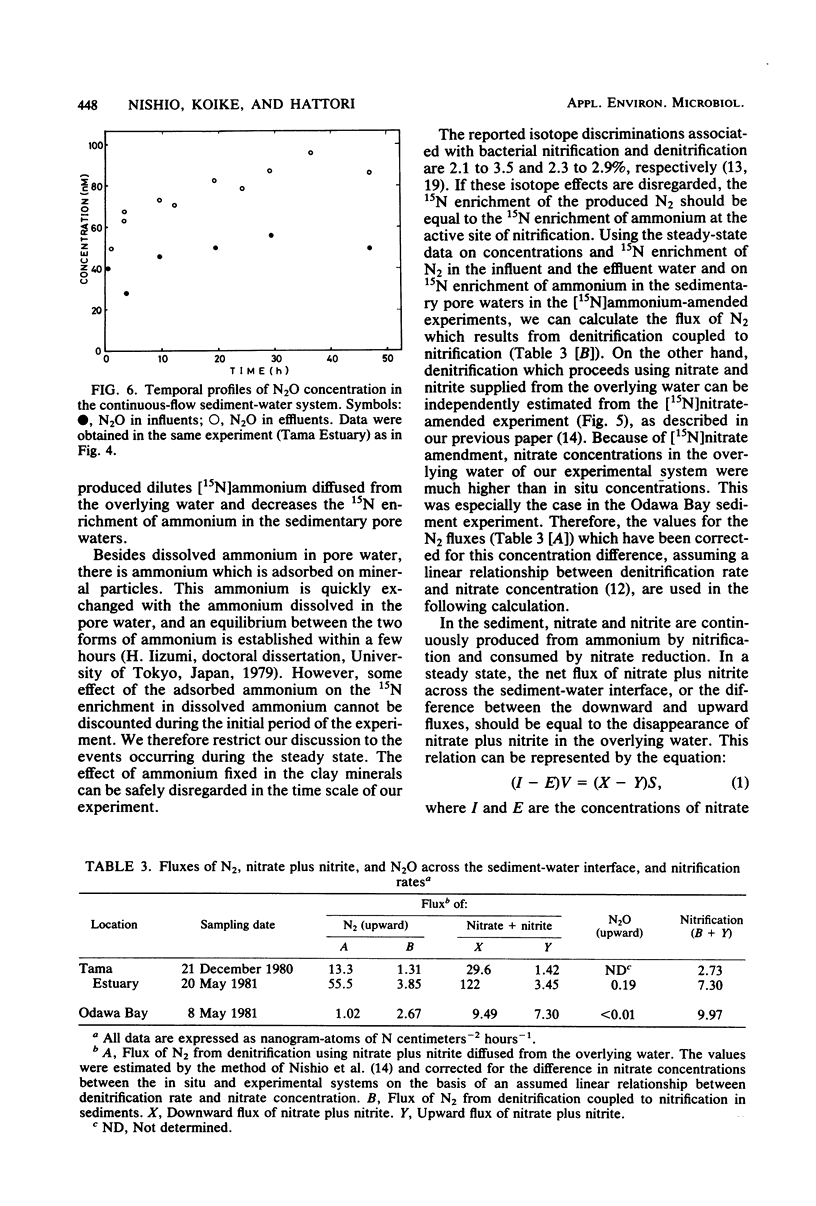
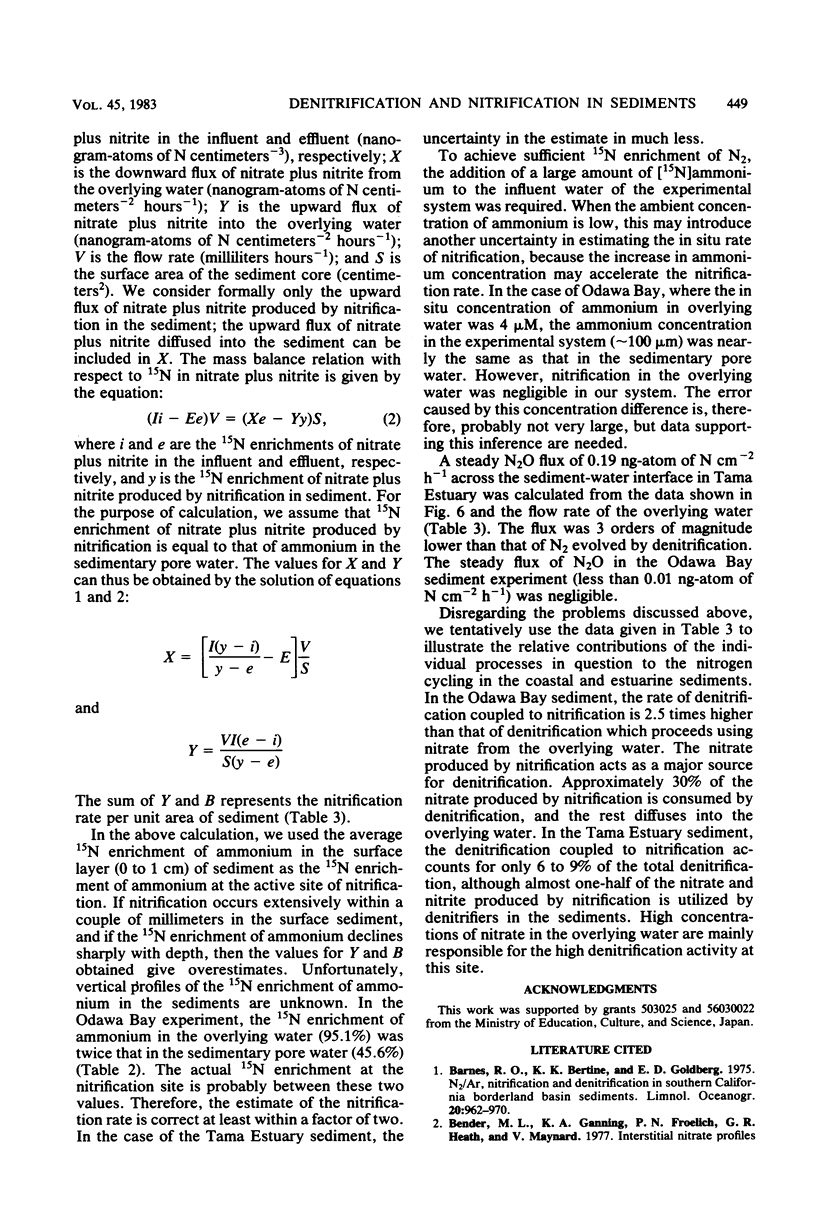
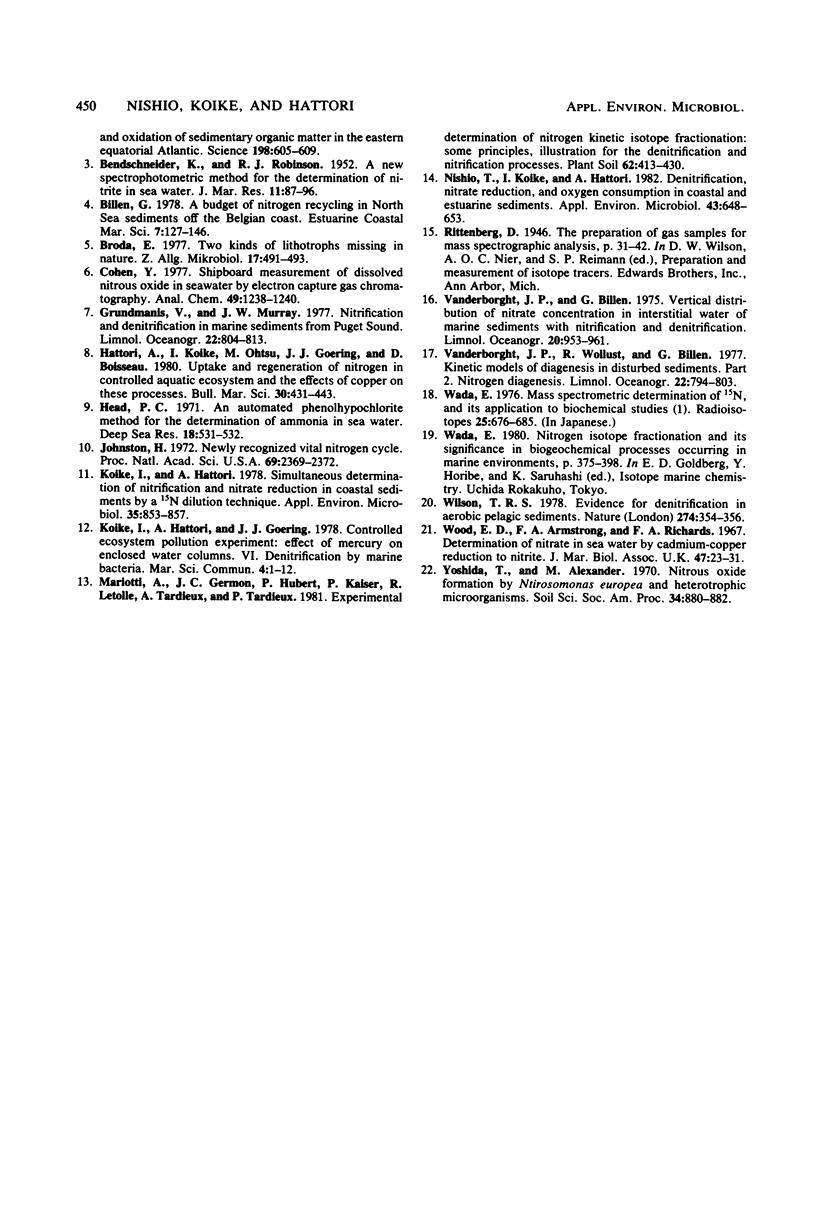
Selected References
These references are in PubMed. This may not be the complete list of references from this article.
- Broda E. Two kinds of lithotrophs missing in nature. Z Allg Mikrobiol. 1977;17(6):491–493. doi: 10.1002/jobm.3630170611. [DOI] [PubMed] [Google Scholar]
- Johnston H. Newly recognized vital nitrogen cycle. Proc Natl Acad Sci U S A. 1972 Sep;69(9):2369–2372. doi: 10.1073/pnas.69.9.2369. [DOI] [PMC free article] [PubMed] [Google Scholar]
- Koike I., Hattori A. Simultaneous determinations of nitrification and nitrate reduction in coastal sediments by a 15N dilution technique. Appl Environ Microbiol. 1978 May;35(5):853–857. doi: 10.1128/aem.35.5.853-857.1978. [DOI] [PMC free article] [PubMed] [Google Scholar]
- Nishio T., Koike I., Hattori A. Denitrification, nitrate reduction, and oxygen consumption in coastal and estuarine sediments. Appl Environ Microbiol. 1982 Mar;43(3):648–653. doi: 10.1128/aem.43.3.648-653.1982. [DOI] [PMC free article] [PubMed] [Google Scholar]
- Wada E. [Measurement of 15N-tracer and its application in mass spectrometry (1) (author's transl)]. Radioisotopes. 1976 Oct;25(10):676–685. doi: 10.3769/radioisotopes.25.10_676. [DOI] [PubMed] [Google Scholar]


